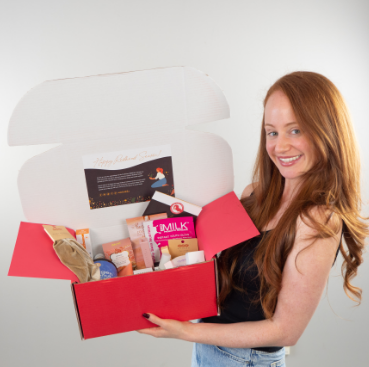Pimples and breakouts are an unfortunate part of life that we all deal with. For sensitive-skinned redheads, our skin may be more prone to breakouts. How you treat a breakout can determine how quickly it clears up and what the skin looks like afterward. Improper treatment of a pimple can lead to prolonged pain, redness, and even scarring. Here’s how redheads can treat some of the most common pimples to get rid of them quickly!
1. Whiteheads:
The most common type of pimple is a whitehead. These pimples are raised, usually cause skin redness, can range from small to large, and are characterized by their white head. Whiteheads are caused by inflammation/clogging of the pores due to excess oils, dead skin, or bacteria. Whiteheads are tempting to squeeze, pick, or pop because this often flattens them. You should avoid touching a white head, which can lead to infection, swelling, and scarring. Instead, treat a whitehead pimple by keeping it clean and dry. Apply a drying agent to the skin or a pimple patch to draw out the white head. Once the pimple is flat, keep it hydrated so it can heal.
To treat whiteheads, consider these steps:
1. Cleanse Gently: Use a gentle, non-comedogenic cleanser twice daily to remove excess oil and impurities.
2. Exfoliate: Exfoliate 1-2 times a week with a product containing salicylic acid or glycolic acid to help unclog pores.
3. Use Topical Treatments: Apply topical treatments with benzoyl peroxide or salicylic acid to target the whiteheads.
4. Avoid Touching Your Face: Refrain from touching or picking at whiteheads to prevent further irritation and infection.
5. Moisturize: Use an oil-free, non-comedogenic moisturizer to keep your skin hydrated.
6. Consider Retinoids: Over-the-counter or prescription retinoids can help prevent clogged pores.
7. Maintain a Healthy Diet: A balanced diet can sometimes help improve skin condition.
If these methods don’t work or your whiteheads are severe, you might want to consult a dermatologist for personalized advice and treatment options.
2. Blackheads:
You get a blackhead when the pore or hair follicle becomes clogged, but no skin grows over it. They are black, or dark, in nature because the dead skin oxidizes and darkens when exposed to the air. Blackheads can be flat or slightly raised and typically are not painful. Blackheads are often found around the nose, chin, and forehead. Blackheads can be treated by extracting the dirt from the pores. This can be achieved by double cleansing, using a pore strip, or exfoliating the face. After extracting the pore, please keep it clean and hydrated and avoid further build-up.
To treat blackheads, you can follow these steps:
1. Cleanse Regularly: Use a gentle, non-comedogenic cleanser to remove dirt and excess oil from your skin.
2. Exfoliate: Exfoliate 1-2 times a week with products containing salicylic acid, glycolic acid, or beta hydroxy acids to help remove dead skin cells and unclog pores.
3. Use Clay Masks: Clay masks can help absorb excess oil and draw out impurities from pores.
4. Apply Retinoids: Over-the-counter or prescription retinoids can help prevent clogged pores and promote skin cell turnover.
5. Use Oil-Free Moisturizers: Choose non-comedogenic moisturizers to keep your skin hydrated without clogging pores.
6. Try Pore Strips: Pore strips can temporarily remove blackheads, but they should only be relied upon sparingly.
7. Avoid Excessive Scrubbing: Scrubbing too hard can irritate the skin and worsen blackheads.
Consider consulting a dermatologist for more targeted treatments for persistent or severe blackheads.
3. Cystic Acne or “Blind” Pimple:
Possibly the most painful type of pimple is cystic acne, or the “blind” pimple. These are the ones that appear under the skin, causing a red, raised area. They have no head and are often painful. The best way to treat cystic acne is to draw the pus to the surface or use a product penetrating the skin to dissolve the pimple. Using a pimple patch with micro darts can be very helpful for drawing the pimple out, at which point it can be treated like a whitehead. It’s best to keep the skin clean but avoid scrubbing, picking, or exfoliating a cystic pimple. Use a cold compress to reduce swelling until the pimple goes away.
Treating cystic acne or a blind pimple can be challenging, but these steps might help:
1. Avoid Picking or Squeezing: This can worsen inflammation and lead to scarring.
2. Apply a Warm Compress: Use a warm, damp cloth on the affected area to help reduce pain and inflammation.
3. Use Topical Treatments: Products containing benzoyl peroxide, salicylic acid, or retinoids can help reduce inflammation and unclog pores.
4. Apply Ice: Applying ice to the area can help reduce swelling and redness.
5. Use a Prescription Medication: For severe cystic acne, a dermatologist might prescribe oral antibiotics, hormonal treatments, or stronger topical medications.
6. Consider Cortisone Injections: In-office cortisone injections can quickly reduce inflammation and size of cystic acne.
7. Maintain a Consistent Skincare Routine: Cleanse your skin gently and use non-comedogenic products.
If over-the-counter treatments are not effective or if the cystic acne is severe, consulting a dermatologist for more tailored treatment options is recommended.
RELATED POSTS
READ: 4 Ways Redheads Can Combat Blind Pimples
READ: How Redheads Can Prevent Acne & Pimples: 4 Tips to Avoid Breakouts
Rock it like a Redhead!



